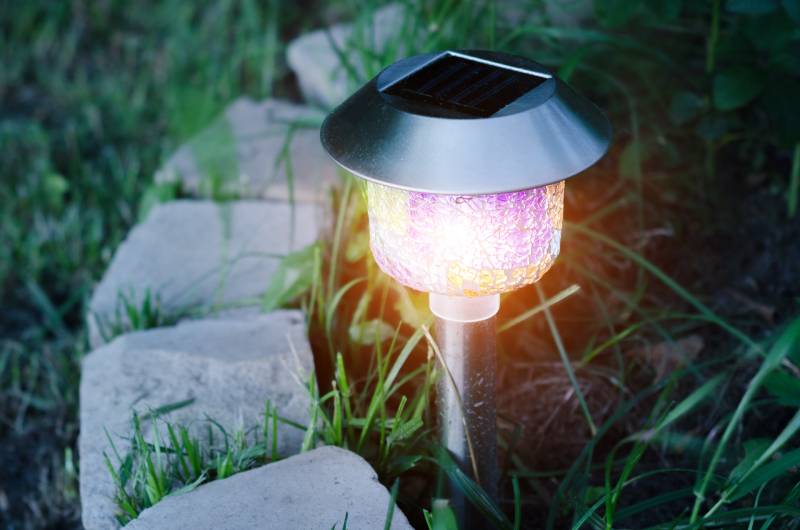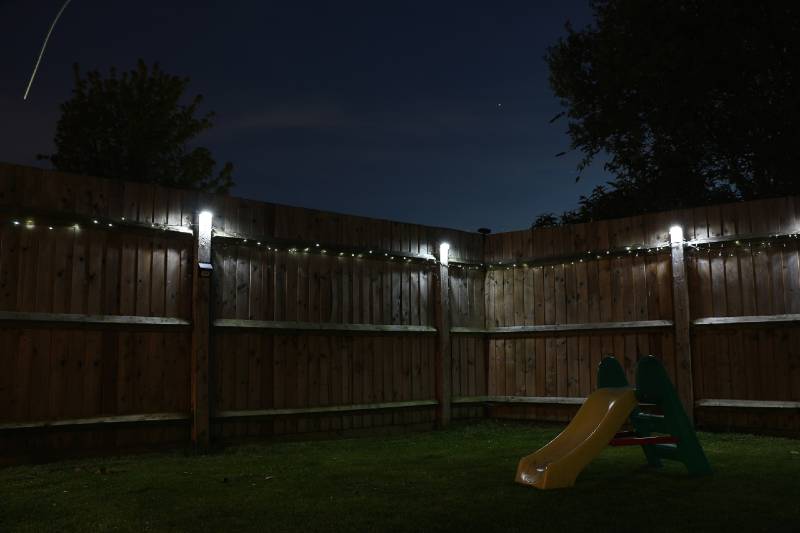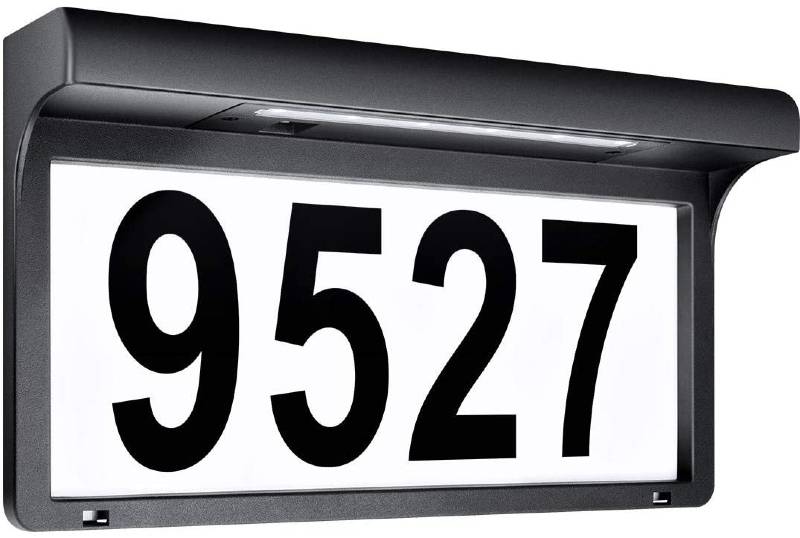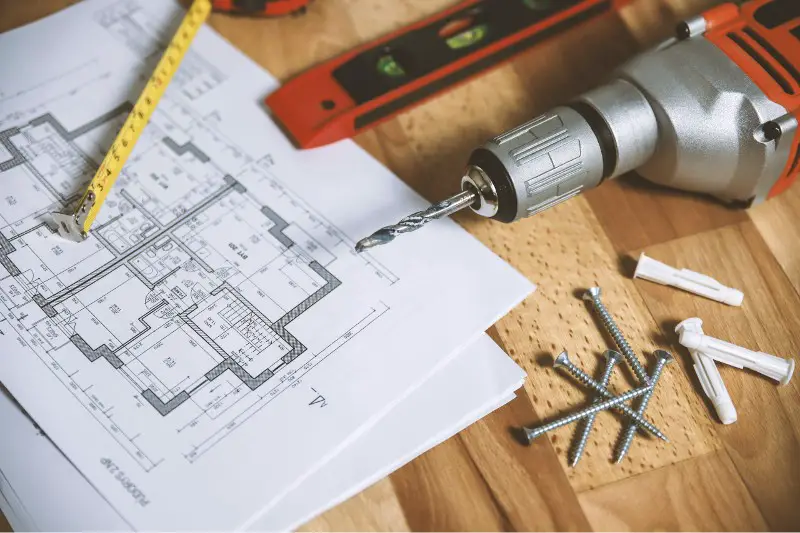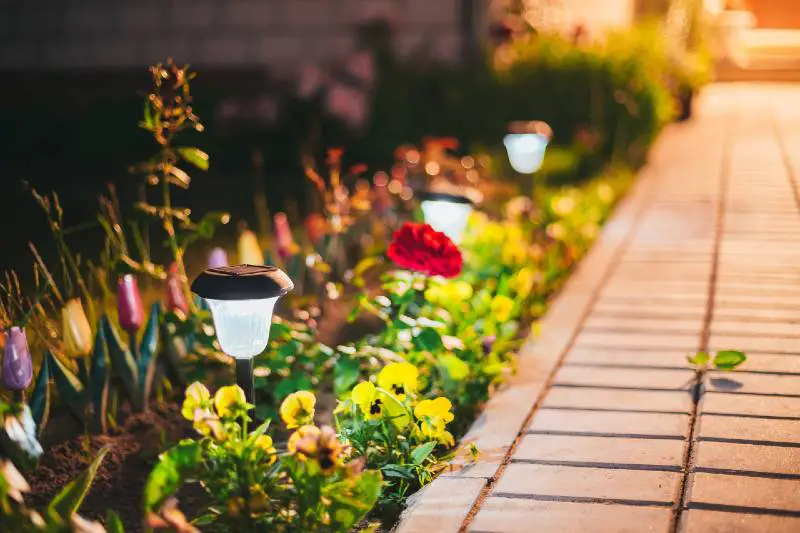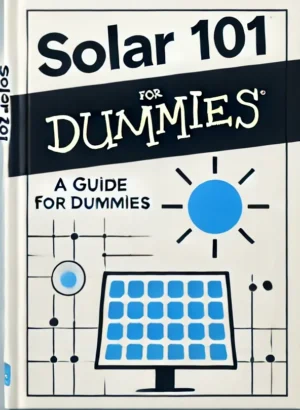In the hunt for budget-friendly home upgrades, solar lights are becoming a favorite.
But before you jump in, you need to weigh their pros and cons petty well.
While solar lights can save you a lot on electricity bills and don’t need much upkeep, they do come with a higher upfront cost and depend on the weather.
So, in this guide, I’ll take you through the main advantages and disadvantages of solar lights.
By the end, you’ll have a clear idea if you’re making the right choice for your home.
Key Takeaways
- Solar lights offer a hassle-free setup with no wires to tangle, making them easy to install anywhere with sunlight exposure.
- They contribute to environmental friendliness by reducing reliance on grid electricity, thus cutting down on air pollution and greenhouse gas emissions.
- Solar lights feature enhanced safety with low-voltage operation and sturdy, weather-resistant designs, suitable for various outdoor conditions.
- They are reliable in diverse weather conditions, thanks to durable materials and high weatherproof ratings, ensuring long-lasting performance.
- While initial costs can be significant, solar lights provide a quick return on investment through energy savings and minimal maintenance requirements.
What Are the Advantages of Solar Lights?
1. Hassle-Free Setup
One of the coolest things about solar lights is just how easy they are to set up, and you can pretty much put them anywhere you like.
What makes them so user-friendly?
Well, they don’t have any pesky wires or cords to untangle or hide.
This means no mess around your house or garden, and you won’t have to fuss with the complicated setup that usually comes with regular lights.
Another big plus is that solar lights don’t need to be near an electrical outlet to work.
Just find a sunny spot for the solar panel, and you’re good to go.
This is super handy because it means you can place them in all sorts of spots, even far away from any building or power source.
The whole installation is a breeze, too.
You don’t need to know anything about electricity or technical stuff, which makes these lights a favorite among DIY fans.
Anyone can get them up and running in no time, without needing to call in a pro.
2. Environmental Friendliness
Solar lights are not just about making installation a breeze—they’re also super good for our planet.
So, here’s the lowdown: moving over to cleaner energy sources like solar can make a big difference in the fight against global warming.
According to Anthropocene magazine, if we shift towards solar energy, we could up our chances of keeping global warming below 1.5 degrees Celsius by a whopping 65%.
Now, let’s break this down a bit.
Our Earth is already about 1 degree Celsius warmer than it was back in the 20th century before our factories started belching out greenhouse gases like crazy.
A single degree might not sound like much, but it’s a big deal.
Just think about it—it only took a 4-degree rise to wrap up the last Ice Age around 12,000 years ago!
Unfortunately, the changes we’ve made to our climate are permanent.
Now, it’s all about damage control—keeping the temperature increase under 2 degrees Celsius to dodge really bad outcomes.
And guess what?
Using solar lights is a part of this big mission.
By cutting down on how much we rely on traditional grids, which cause air pollution and greenhouse gas emissions, we lessen the need for dirty fossil fuels.
This switch not only means we get cleaner air but also a healthier planet.
Related Article: How to Reduce Your Carbon Footprint
And if you’re itching to understand how a temperature increase of more than 2 degrees could mess things up on Earth, you can watch this video to get the full picture:
3. Enhanced Safety Features
See, those traditional lights can get a bit risky.
They might have issues with construction quality, materials that age and degrade, or even electrical quirks that can lead to accidents.
But solar lights?
They skip all that hassle because they don’t use alternating current, which means they avoid those typical electrical risks.
This makes them super safe, especially when you need to fix them up or install them.
What’s cool is that solar lights run on just 12 volts.
That’s so low that it’s harmless, which is great news if you have curious pets or kids around.
This low voltage means you can relax, knowing your outdoor lighting isn’t going to cause any shocks.
They’re also built tough — most solar lights come with a high protection rating, like an IP of 64 or more.
This means they’re good at keeping out dust and water, making them perfect for all kinds of weather.
Kids and pets will love them too.
A lot of solar lights come with different settings and fun colors that make them more than just lights; they’re like little shows in your garden.
Plus, no messy wires means no tripping or worrying about someone getting a shock.
And, get this: even though they sit in the sun all day, they don’t get hot.
That’s right, you can place them wherever you need them, even in spots that get a lot of sun, and they’ll stay cool to the touch.
This makes solar lights a worry-free option for lighting up your outdoor space safely.
Related Article: How Do Solar Powered Lights Work
4. Reliable in Various Weather Conditions
Now, the fact that solar lights are a bit pricey turns into an advantage when you consider their durability and how they’re built to brave the elements.
Think about it—most solar lights are stationed outdoors, so they need to be tough enough to handle all sorts of weather, from scorching sun to freezing snowstorms.
That’s why these lights are made from high-quality materials like stainless steel, ABS plastic, and cast aluminum.
These aren’t just any materials; they’re chosen for their strength and ability to resist corrosion and wear.
But it’s not just about tough materials.
Solar lights also need top-notch weatherproofing, and that’s where the IP (Ingress Protection) rating comes in.
This rating tells you how well the light can handle water, which is super important for outdoor gear.
Here’s a quick rundown on what those IP ratings mean:
- IPX0: No water protection.
- IPX1: Protection from dripping water.
- IPX2: Protection from vertically dripping water.
- IPX3: Protection from water sprays up to 60° from vertical.
- IPX4: Protection from water splashing from any direction.
- IPX5: Protection from water jets from any direction.
- IPX6: Protection from powerful water jets.
- IPX7: Protection from being submerged in water up to 3 feet (1 meter).
- IPX8: Protection from being submerged in water deeper than 3 feet (1 meter).
For most outdoor settings, like your garden, an IPX4 rating is usually sufficient, keeping your lights safe through rainstorms and splashes.
But if your place turns into a mini lake during heavy rains, or if you live near bodies of water, you might want to aim for something like IPX6 or higher.
This ensures your lights won’t just survive but thrive, even in wet conditions.
Related Article: How To Fix Solar Lights At Home
5. Minimal Costs for Maintenance
Since most solar lights come with LED bulbs, they go the distance.
We’re talking about 50,000 to 100,000 hours of light from just one bulb.
This means you won’t be climbing ladders to change them out all the time, which is a big plus if you’re not into frequent upkeep.
And then there are the solar panels – these guys are tough!
They keep turning sunlight into electricity for up to 30 years.
That’s pretty impressive, especially considering they have to deal with all sorts of weather—from scorching heat waves to pouring rain.
The casing around the lights is no joke either.
As I said before, it’s built to be tough and weather-resistant, so whether it’s really sunny or incredibly wet, your lights are going to keep shining without a hitch.
Taking care of solar lights is also pretty much a breeze.
Mostly, all they need is a quick clean now and then to make sure no dust or leaves are blocking the panels.
6. Quick Return on Investment
Let’s talk money because, let’s be honest, the upfront cost is probably what’s keeping you from going off-grid, right?
Yes, solar lights can be a bit pricey at the start, but they end up being much cheaper in the long run.
Let’s break this down more to show you what I mean.
The average cost per kilowatt-hour (kWh) in the United States is about 13.31 cents.
If a typical bulb uses 40 watts per hour, and you run it for 5 hours a day, that’s 200 watts every day or 6 kWh per month.
So, the cost of powering just one bulb for a month comes out to about 80 cents, which is roughly $9.60 a year and $28.80 over 3 years.
Now, compare that with a good quality solar light bulb, which might cost you around $25 and can last for up to 8 years.
But let’s say, for argument’s sake, it only lasts for 3 years.
Even then, by switching to solar, you’re not just cutting down on energy use—you’re also saving a bit of cash.
You’d save about $3.3 for every traditional light you replace with a solar light over three years.
Pretty neat, huh?
So yeah, the initial price might be a bit higher, but when you factor in the savings on your electricity bills, plus the long life of solar lights, the numbers start to look good.
7. Versatile and Convenient Applications
Think solar lights are just bland, basic bulbs? Think again!
The solar industry has seriously stepped up its game in recent years.
Now, you can find solar lights in a huge array of shapes, styles, sizes, and colors.
Whether you need to light up a shadowy backyard corner or you’re looking for some vibrant, festive lights for Christmas, there’s a solar light that fits the bill.
These lights are more than just pretty to look at.
They’re super practical, too.
During the day, they quietly soak up solar energy, storing it until nightfall.
When it gets dark, they automatically turn on to illuminate your space.
Come sunrise, they turn off and start charging again.
It’s a seamless cycle that happens without any effort on your part.
This automated on-and-off feature isn’t just about convenience; it’s also great for security applications.
If you want to light up a walkway or deter potential intruders, solar lights are perfect.
There’s no need to mess with timers or remember to flip switches every night.
Plus, if you’re heading out of town, you can rest easy knowing your home will stay lit up at night, making it less appealing to burglars.
Related Article: Best Solar Security Lights Review
What Are the Disadvantages of Solar Lights?
1. Significant Initial Costs
Now, let’s talk about the elephant in the room: solar lights are not cheap to set up.
Unlike your typical light fixtures that just need housing, a bulb, and a switch, solar lights also require a solar panel and a battery.
These extra pieces are crucial because they capture and store solar energy, but they bump up the price tag at the start.
Now, you might be thinking that’s a big downside, but hold on a second—there’s more to the story.
Over time, these initial costs can turn into savings.
As I mentioned above, solar lights can cut down your energy bills since they use the sun’s energy instead of grid electricity.
Plus, you’ll find yourself spending less on maintenance and bulb replacement because solar LED bulbs last for ages—between 50,000 and 100,000 hours!
So, in the long haul, shelling out a bit more upfront for solar lights can be more wallet-friendly than sticking with traditional lights.
Related Article: 39+ Types of Solar Lights and How to Use Them
2. Dependence on Geographic and Climatic Conditions
Although solar lights are cool, how well they work can depend on where you live.
If you’re in a spot that gets lots of sunshine, you’re in luck—solar lights will soak up the sun all day and light up your nights just fine.
But, if your place tends to be more on the cloudy or rainy side, things might not go as smoothly.
Here’s the deal: solar lights need plenty of sunlight to charge up properly.
Without it, they might not shine as brightly or last as long through the night, which can be pretty disappointing if you were counting on that glow.
This might mean you end up having to use regular electric lights more often than you’d like, which sort of misses the point of going solar, right?
Basically, while solar lights are awesome for saving energy, they kind of have to play by the rules of Mother Nature.
If your weather’s not playing ball, you might not get all the benefits you hoped for, which can be a bit of a letdown if you’re living somewhere with lots of gloomy days.
3. Battery Longevity Concerns
So, here’s a little hiccup with solar lights—the battery life isn’t always reliable.
Think of batteries as the weak link in the whole solar setup.
They can’t stay fully juiced up all the time, especially if the sun isn’t playing nice and shining bright regularly.
Over time, you might notice the batteries only charge up halfway, maybe 50%, which can be a real bummer, especially during a string of cloudy days.
Now, let’s toss in a couple of terms that make this whole situation a bit more tricky: “depth of discharge” (DoD) and the “memory effect.”
Depth of discharge is just a fancy way of saying how much battery you’re using up before it gets charged again.
The more you drain it, the quicker it tends to give up on life.
And then there’s the memory effect, which is mostly a problem for older types of batteries like NiCd (Nickel-Cadmium).
They get a little forgetful if you keep charging them when they’re only partly used—they start thinking that’s their full capacity, which can dial down their effectiveness over time.
Now, let’s say it’s been overcast for a few days.
Your solar light’s batteries aren’t getting enough sun to charge fully, and on top of that, they’re getting hit by these DoD and memory issues.
The result?
Your lights might not glow as brightly or last as long through the night, which isn’t ideal if you need them for safety or to light up your yard.
4. Pollution from Lead-Acid Batteries
I know I’ve been raving about how great solar lights are for the environment, but there’s a little snag when we talk about the batteries some of these lights use.
To cut costs, a lot of companies stick with lead-acid batteries.
Now, these batteries are made with stuff like lead and sulfuric acid—not exactly the friendliest materials for our planet.
Here’s where the issue kicks in: once these batteries have given all they can, getting rid of them safely becomes a real headache.
These batteries are loaded with heavy metals, like lead, that can sneak into the soil and our water systems if they’re tossed out carelessly.
This kind of pollution is bad news for wildlife and could even mess with our health if it ends up in our drinking water or the food we grow.
5. Effects of Snow and Dust
Snow, dust, and moisture can throw a wrench in the works for your solar lights.
These elements love to settle on solar panels, especially when they’re flat on the ground or on your roof.
What happens is they block the panels from soaking up the sun, which can mess with the energy conversion process.
Say you’re in a place like Minnesota where the snow piles up like nobody’s business, or somewhere dusty like parts of Nevada.
In these places, solar panels can end up under a thick coat of snow or dust pretty frequently.
That means you have to keep them clean regularly if you want them to keep lighting up your yard or street effectively.
FAQs
What Are 5 Advantages and Disadvantages of Solar?
5 advantages of solar are its eco-friendliness, cost savings on electricity bills, low maintenance requirements, renewable nature, and versatility.
However, it also involves high initial costs, dependency on weather conditions, potential battery issues, space requirements, and reduced effectiveness in shaded areas.
What Are the Disadvantages of Solar Garden Lights?
The disadvantages of solar garden lights are high upfront costs, and their performance can be hindered by cloudy weather and short battery life.
What Are 3 Advantages of Solar?
3 advantages of solar energy are that it’s renewable, reduces electricity costs, and is environmentally friendly.
Conclusion
As promised, we’ve gone over the main pros and cons of solar lights.
They can save you a lot on electricity bills, are easy to keep up, and are great for the environment.
But, they can cost a bit more upfront and need plenty of sunlight to work well.
Here’s a pro tip: place your solar panels at the right angle based on where you live to get the most sun all year round.
Also, think about getting high-quality panels and hybrid systems that can use electric power on cloudy days.
Join our solar microdosing newsletter and get bite-sized, easy-to-understand insights into the world of solar energy.
From how solar panels work to building your own DIY solar system, we’ve got you covered.


